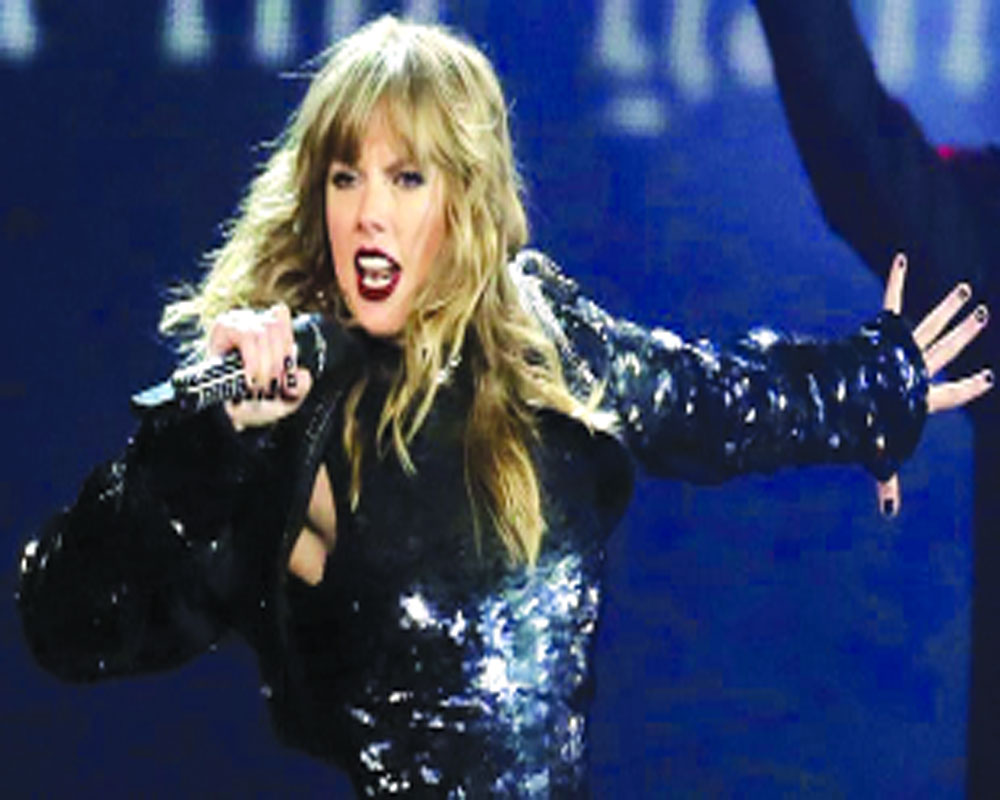Taylor Swift breaks political silence
Taylor Swift has made her first foray into US politics, publicly endorsing two Democrats for the upcoming midterm elections, while aligning herself to fight for LGBTQ rights, gender equity, and an end to the “terrifying, sickening and prevalent” racism in the US. “In the past I’ve been reluctant to publicly voice my political opinions, but due to several events in my life and in the world in the past two years, I feel very differently about that now,” Swift wrote on social media on Sunday night, in a plea for her young fans to register and vote. The post accrued 360,000 Instagram likes within the first hour.
“I always have and always will cast my vote based on which candidate will protect and fight for the human rights I believe we all deserve in this country. I believe in the fight for LGBTQ rights, and that any form of discrimination based on sexual orientation or gender is WRONG. I believe that the systemic racism we still see in this country towards people of color is terrifying, sickening and prevalent.
“I cannot vote for someone who will not be willing to fight for dignity for ALL Americans, no matter their skin color, gender or who they love.”
In the post she backs Democrats in the key state of Tennessee, saying she “cannot support” Marsha Blackburn, the Republican candidate for the Senate who was endorsed by Donald Trump last week, and has voted with Trump almost all the time. (“I’m politically incorrect and proud of it,” the arch conservative said in her 2017 Senate announcement video.)
Not important for Wikipedia entry?
When the Royal Swedish Academy of Sciences in Stockholm announced the Nobel prize for physics this week, anyone wanting to find out more about one of the three winners would have drawn a blank on Wikipedia. Until around an hour and a half after the award was announced on Tuesday, the Canadian physicist Donna Strickland was not deemed significant enough to merit her own page on the user-edited encyclopedia. The oversight has once again highlighted the marginalisation of women in science and gender bias at Wikipedia.
Strickland is an associate professor of physics and astronomy at the University of Waterloo and former president of the Optical Society, but when a Wikipedia user attempted to create a profile for her in March, the page was denied by a moderator. “This submission’s references do not show that the subject qualifies for a Wikipedia article,” said the moderator.
Soon after Tuesday’s announcement, however, the Wikipedia community scrambled to build up a profile, completing sections on her research, biography and her awards. But the belated recognition contrasted with that afforded to Strickland’s colleague Gérard Mourou — with whom she shared the award — who had a Wikipedia page in 2005. Strickland shared the award with Mourou and Arthur Ashkin for their work on pulse lasers — widely viewed as a precursor to precise machining and laser surgery. She is the first woman to win the award since it went to Maria Goeppert-Mayer in 1963.
A typeface that can ‘boost memory’
Australian researchers say they have developed a new tool that could help students cramming for exams — a font that helps the reader remember information. Melbourne-based RMIT University’s behavioural business lab and design school teamed up to create “Sans Forgetica”, which they say uses psychological and design theories to aid memory retention. About 400 university students have been involved in a study that found a small increase in the amount participants remembered — 57 per cent of text written in Sans Forgetica compared with 50 per cent in a plain Arial. Typography lecturer Stephen Banham said the font had an unusual seven-degree back slant to the left and gaps in each letter. “The mind will naturally seek to complete those shapes and so by doing that it slows the reading and triggers memory,” Banham told the Guardian.
Senior marketing lecturer Janneke Blijlevens said the concept of “desirable difficulty” underpinned the font’s design. “When we want to learn something and remember it, it’s good to have a little bit of an obstruction added to that learning process because if something is too easy it doesn’t create a memory trace,” she told the Guardian. “If it’s too difficult, it doesn’t leave a memory trace either. So you need to look for that sweet spot.”
The font was designed with year 12 students cramming for exams in mind but could also be used to help people studying foreign languages and elderly people grappling with memory loss. Blijlevens is keen to test the font in other contexts such as proofreading. Banham, who has created about 20 fonts, said the typeface would be best used for short texts.


























